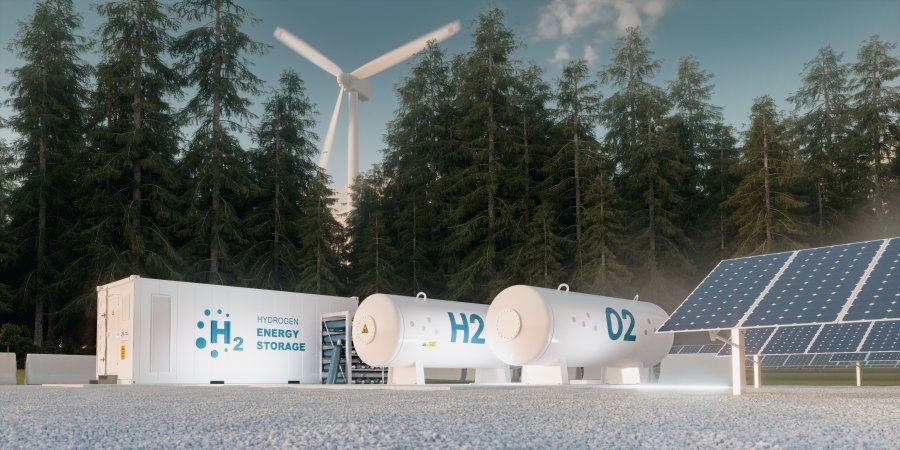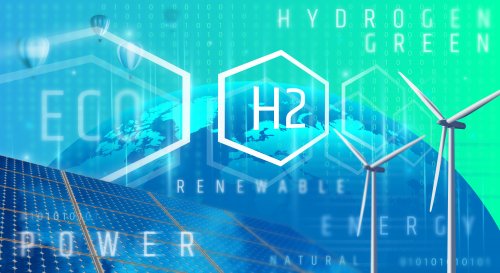In Germany a company for the production of special chemicals Evonik develops anion-conducting membrane for cheap production of green hydrogen.
The company focuses on so-called next-generation solutions with a strong positive impact on the environment, reports Gasworld.
Membrane specialist Evonik is committed to making the green revolution a reality, putting hydrogen front and center in its long-term vision for a low-carbon future.
According to the International Energy Agency (IEA), green hydrogen makes up less than 0.1% of global hydrogen production. Hydrogen, which has significant decarbonization potential, is still hampered by its association with steam methane reforming (SMR), a technology that produces so-called grey hydrogen.
Dr. Oliver Bush, Evonik's vice president of defossilization, said the industry needs to make the transition from grey hydrogen to pure green hydrogen.
He noted that in Germany, the modern chemical industry needs more than 1 million tons of hydrogen every year, and the demand will grow over time. To reduce carbon emissions, it is necessary to convert gray hydrogen into green.
Green hydrogen and membranes
Hydrogen can be produced by a method called electrolysis. It involves the application of voltage between two electrodes, which splits water into its constituent components of oxygen and hydrogen.
Fuel cell technology uses this concept, but in reverse. When hydrogen and oxygen combine, a reaction occurs that forms water and generates an electric current.
To improve the production of green hydrogen, Evonik is developing an anion-conducting membrane that uses the electrolysis of water from an anion exchange membrane (AEM). By eliminating the need for expensive materials and metals for the cells, Evonik promises that the process will reduce investment costs.
"Evonik's strategic focus is on so-called next-generation solutions with a strong positive impact on the environment," commented Janusz Berger, Head of Market Communications. "New product developments, such as our DURAION membrane for cost-effective green hydrogen production, are part of the whole movement".
Storage and transportation
Green hydrogen also requires the creation of an appropriate infrastructure of pipelines.
To ensure clean hydrogen production, projects such as the GET H2 Nukleus – Germany's first public hydrogen network – use Evonik's polyamide 12, a high-performance material used in flexible pipelines that can be used to transport hydrogen.
Another solution developed by Evonik and Linde uses pressure swing adsorption (PSA) technology and Evonik's hollow fiber membrane technology to deliver 99.9% pure hydrogen.
In addition to green hydrogen, Evonik has developed another alternative energy solution with SEPURAN Green membranes.
Thanks to the use of biogas for modernization at one of the largest biogas plants in Germany, this technology allows the production of about 9,000 tons of biomethane per year.
"Evonik's gas separation membrane business is aimed at transitioning to a sustainable gas economy based on clean hydrogen and biomethane. We are determined to advance the energy transition," added Berger.
Grey hydrogen, produced through heat, pressure and catalysts associated with fossil sources such as natural gas, generates about 830 million tons of CO2 emissions worldwide per year. SMR is one of the least sustainable methods of hydrogen production and is responsible for over 95% of global hydrogen demand.
However, demand for hydrogen fuel cell technology has been growing in recent years, with more than 300 hydrogen projects registered in the IEA database since 2000.
Earlier, EcoPolitic wrote, that gas company Air Products, USA, will spend at least $4 billion in additional capital to support transition to clean energy, which will increase the total commitment to $15 billion by 2027.
As EcoPolitic previously reported, the Minister of Energy of Ukraine Herman Galushchenko stated that the EU is interested in the development of Ukrainian renewable energy sources, in particular, biomethane and hydrogen.





